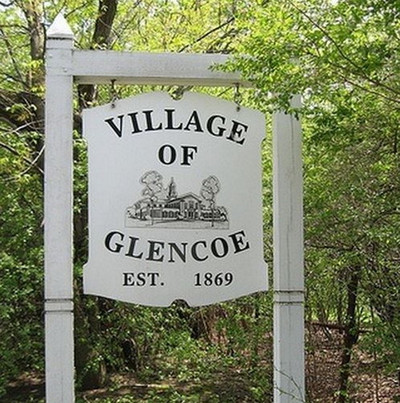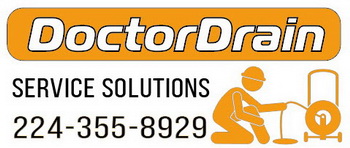Doctor Drain Services in Glencoe
-
Power Rodding
-
Hydro Jetting
-
Video Inspection
-
Drain Repair
-
Drain Cleaning
-
Sewer Cleaning
-
Sump pump
-
Sewage Ejector Pump
-
Main Line Rodding
-
Bathtub Drain
-
Bathroom Sinks
-
Kitchen Drain
-
Laundry Drain
-
Toilets
-
Floor Drain
-
Storm Drain

Glencoe is a lakefront village in northeastern Cook County, Illinois, United States. As of the 2020 census, the population was 8,849. Glencoe is part of Chicago's North Shore and one of the wealthiest communities of Illinois.Glencoe is a lakefront village in northeastern Cook County, Illinois, United States. As of the 2020 census, the population was 8,849. Glencoe is part of Chicago's North Shore and one of the wealthiest communities of Illinois.
Opinions differ about the origins of the village's name. Some attribute it to an early resident, Matthew Coe. Others say it is named for the area of Scotland of the same name. It developed in the late 19th century around a railroad stop. Former Chicago mayor Walter S. Gurnee had become president of the line connecting Chicago and Milwaukee, and often bought up and developed land around railroad stops. Thus, one historian believes the name derives from the maiden name of Gurnee's wife, since Gurnee bought the land in 1867 and began subdivision, although financial problems prevented him from building a home there and he returned to New York for his final years. The village's first seal was based on the seal of Glencoe, Scotland.
During the late 19th and early 20th centuries, many elegant homes were built in Glencoe. Most notably, the village is home to the world's third largest collection of Frank Lloyd Wright structures: the Ravine Bluff subdivision contains seven houses, a concrete bridge and three sculptural markers. There are also two larger, individually built homes, located nearby Ravine Bluffs. In addition to Wright, there are houses designed by Howard Van Doren Shaw, David Adler, Robert E. Seyfarth and George Washington Maher, among others.
Glencoe has had an African American population since almost immediately after the Village's 1869 incorporation.[Images of America, Glencoe Illinois, Ellen Kettler Paseltiner and Ellen Schubert for the Glencoe Historical Society p.8]. Many in the Black and Italian community lived within a five-square block area near what is now Vernon Avenue from Washington to Jackson streets. Homes in this area were close together in accordance with the city planner's 20-foot wide alleys. In 1920 the city of Glencoe condemned these properties to clear land for a park.[Glencoe Historical Society Exhibition]
In 1920 the African American community in Glencoe grew to 676 residents. The African American population in 1930 numbered 313 members and 176 in the 2000 census.
Homer Wilson was the first Black property owner in Glencoe. He went on to mortgage his home to found the St. Paul AME Church which is still active in Glencoe under the leadership of Katrese Kirk McKenzie. Glencoe beaches were not integrated until 1942 when a court injunction allowed the sale of beach passes for the (formerly white-only) Park Avenue beach to the family that requested them, A.L. Foster, his wife, Mildred and their two sons who lived at 379 Jefferson.
Glencoe Metra Station in 2012
Glencoe has a Village Manager form of government. It had one of the first public safety departments (combined police/fire/paramedic). In 1921 Glencoe adopted the first zoning code in Illinois. Its land-use plan, adopted in 1940, has been adhered to with minor changes since then. For example, eminent domain law was used to condemn homes of the Black and Italian residents to make way for a new park next to South School. The allowed uses outlined on the 1940 zoning map is predominantly a single-family residential area, with no industrial uses. It has a small cohesive central business district that provides most basic services, including post office, library, Village Hall, performing arts theatre, train station (to Chicago), and other shopping needs.
Since the late 20th century, for 20 years the village has had redevelopment of smaller homes. They have been torn down and replaced by larger homes, spurring debate on historic preservation, the effects of an increasingly wealthy demographic, and rising property taxes.
In addition to such private development, during this time, the village has completed major reconstruction of its street and sidewalk network. The village installed brick sidewalks and period street lights in the business district. Many public buildings have been or are being remodelled or expanded, including the public schools, Village Hall, library, Park District Community Center, and refrigerated outdoor ice rink. The building housing the Glencoe Woman's Club (formerly Woman's Library Club) was torn down. It was replaced by a new building, designed by Jeanne Gang, that houses Writers Theatre. The new building opened to the public in 2016. The private golf clubs (Lake Shore Country Club and Skokie Country Club) have also conducted major remodeling, additions, and reconstruction.

